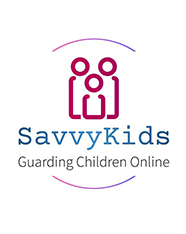
The news from Stockholm
In 2009 Sweden proudly rolled out tablets and laptops across its classrooms—even in preschool—believing that early digital immersion would turbo-charge learning. Fast forward to 2023 and the same country has earmarked tens of millions of euros to bring back printed textbooks, handwriting drills, and device-free lessons.
Swedish officials cited falling reading scores, shorter attention spans, and weaker basic skills as proof that excess screen exposure was hurting—not helping—students’ progress.
Why should an Indian (or US, UK, etc.) parent care?
Because the pattern is global. When mobile devices replace books for long stretches, three things tend to happen:
-
Reading comprehension drops – The brain skims on a smartphone, but it dwells on paper.
-
Attention fractures – Constant notifications train children to hop from app to app, undermining deep focus.
-
Hands-on learning shrinks – Fewer real-world tasks mean fewer problem-solving opportunities.
Sweden’s course correction is a data-rich case study that shows why managing children’s screen time is now an urgent, everyday job for parents.
How much screen is “too much”?
Current research suggests that once recreational screen exposure exceeds two hours a day, reading scores and memory tasks decline measurably. During school holidays those numbers often double. Left unchecked, a ten-year-old could log an extra 300+ hours of passive scrolling in a single summer.
Practical ways to balance screens and books
| Goal | Simple Action | Tech-Assisted Action |
|---|---|---|
| Reclaim reading stamina | Create a family “20-minute reading block” before bed | Use [SavvyKids Reading Mode] to lock distracting apps during that window |
| Protect attention spans | Schedule outdoor play after homework | Enforce a 30-minute screen break with automatic app blocking |
| Keep lessons on track | Reward completed chores with limited game time | Set daily Screen Time limits directly from your phone |
(concerned how screen time impacts? See our guide → Link)
Why a parental control app to manage screen time matters
Good intentions fade when real life gets busy. A modern parental control app to manage screen time offers three big advantages:
-
Remote control – You can adjust limits without touching your child’s device—whether you’re in the next room or on a business trip.
-
Granular blocking – Want to block apps for kids that you deem unsafe but keep educational ones? Two taps.
-
Data, not guesswork – Weekly summaries show exactly where the minutes go, turning family debates into informed decisions.
How SavvyKids puts you in charge (gently)
SavvyKids installs on both the parent’s and the child’s devices in under five minutes. From a single dashboard you can:
-
Set custom screen time schedules for weekdays and weekends.
-
Pause the mobile remotely if chores aren’t done—no drama required.
-
Filter content by age and instantly lock new downloads until you approve.
Try it free for 30 days—use code SAVVY30 during registration.
(Curious about SavvyKids? Visit our Features page → Link)
Final thought
Sweden’s decision to trade tablets for textbooks shows that even the most tech-forward nations are re-evaluating heavy smartphone use in the classroom. As parents we don’t have to wait for policy shifts. By combining clear family rules with the right digital tools, we can give our children the best of both worlds: the curiosity and depth that books nurture and the fluency that screens demand—minus the overload.
Let this summer be the season your family rewrites its digital habits.
